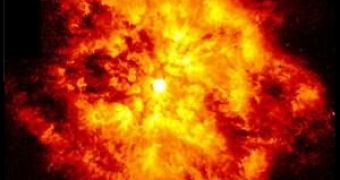We actually don’t know that many things about stars, despite the fact that there have been many attempts and numerous researches in the field. The only close star we have most access to, theoretically speaking, is the Sun. But we only know little about it as well, given the still limited technology we have, and the difficulties such studies involve. So, how can we learn more about these fascinating objects then? Experts propose that we try to recreate them in laboratory conditions, based on what we already know, improve the results along the way, in the light of novel discoveries, and then use them to obtain answers on the myriad of questions we still have.
A recent workshop hosted by the European Science Foundation (ESF) placed the issue of a high energy laboratory, called Extreme Laboratory Astrophysics (ELA), on the table, along with Europe-wide collaboration plans for the next five years. This laboratory would build on the progress obtained in plasma jet studies, magnetic field research and other required fields, in an interdisciplinary training and research effort. This would result in dealing with temperatures and magnetism millions of times the scale of those normally encountered on Earth.
"The workshop covered a large spectrum of research both in astrophysics and in laboratory plasma physics: from cosmic rays acceleration, to the properties of fast winds in stars, and from high-power lasers aimed at achieving fusion to experiments producing magnetic bubbles expanding at hundreds of kilometres per second," said Andrea Ciardi, convenor of the ESF workshop and plasma physicist at the Ecole Normale Superieure in Paris, cited by PhysOrg. "Indeed the excitement comes from being able to re-create in the laboratory astrophysical phenomena taking place in some of the most extreme and exotic objects in the universe."
If successful, this massive-scale experiment would have major implications in a wide range of fields, such as improving the use of nuclear fusion as a viable energy source in the near future. Among the other applications, the more obvious that can be noted are a larger comprehension of the way cosmic radiation affects our atmosphere, and its effect on thunderstorm behavior and cloud formation.

 14 DAY TRIAL //
14 DAY TRIAL //